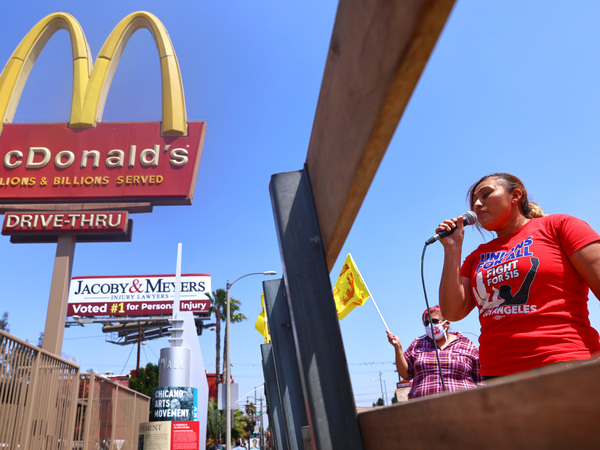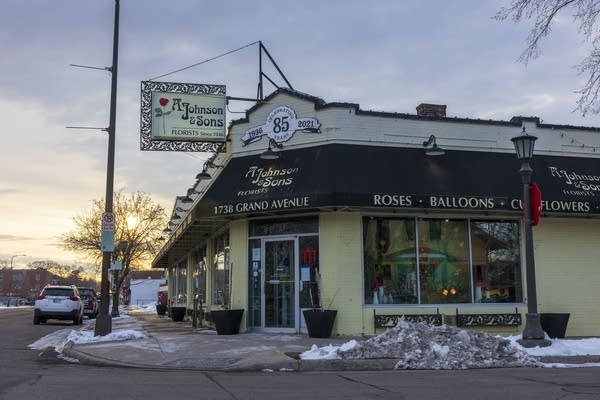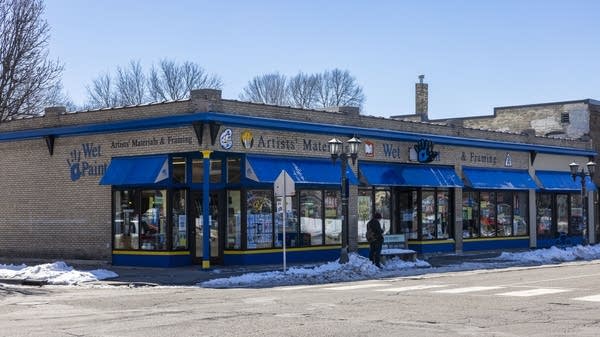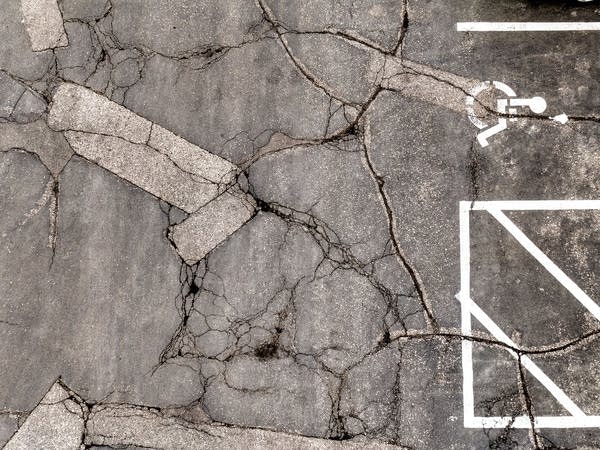
Half a million California workers will get $20 minimum wage, starting today
April 1, 2024
Trump's social media stock tumbles, erasing early gains
April 1, 2024The City of St. Paul’s new 1 percent sales tax increase began Monday, raising the total county, state and local sales tax to nearly 10 percent — the highest in Minnesota, according to the Department of Revenue.
As residents adjust to a cost bump on non-essentials, they can expect construction signs in the coming months, too, as infrastructure projects backed by the new fund begin.
The tax, which residents passed last November, has been lauded by St. Paul mayor Melvin Carter among others as a way to tackle necessary infrastructure improvements. The city says there’s currently a maintenance backlog of more than $100 million to address.
The tax is anticipated to raise $1 billion over 20 years, with $738 million allocated for streets and $246 million for parks and recreation.
Along with the higher cost to buy concert tickets and hardware — but not food or clothing — improved playgrounds and tennis courts will be some of the first visible changes, said Parks and Recreation Director Andy Rodriguez. He said the city also hopes to start work on a geothermal heating project at the Como Zoo.
The revamp of streets from the fund begins with the complete reconstruction of Grand Avenue from Fairview Avenue to Cambridge Street this summer, then continuing through Snelling Avenue next year. Construction of that first stretch is anticipated to conclude in October.
“This is about building our infrastructure for the next generation and it gives us the chance not just to replace concrete where it was, but to rethink the way we prepare for our climate crisis and all the different demands that our public infrastructure has,” Mayor Carter said.
Grand Avenue reconstruction, the first of many
The $11.5 million reconstruction of Grand is a preview for what could come in the next two decades as the city works to rebuild 24 streets — or an anticipated 44 miles of improvements.
In the next few years, Jackson Street, University Avenue, Earl Street and Pelham Boulevard will see improvements. Carter said eventually Summit Avenue will be reconstructed, too.
“The last time Summit was reconstructed, Taft was the president. More importantly, car ownership in America was just under 3 percent at that point in time,” Carter said. “Our climate has changed significantly. The things that our buildings, our infrastructure, our streets, our sidewalks, our bikeways have to be built for these days are fundamentally different than they were before.”
Carter said the city is starting with Grand because planning began three years ago and busier streets are the priority. The portion targeted by the project sees about 8,000 motor vehicles and between 150 to 4,500 pedestrians daily, according to the city. Carter said residents shouldn’t expect the new funds to quickly fix quieter streets, such as Aurora Avenue and Avon Street.
By rebuilding the streets, the city aims to escape the cycle of repeatedly fixing the same surface issues and bounce back from its own pavement condition rating of “fair to poor.” Last year, a record number of residents asked the city to pay for car damage caused by potholes — with 1,000 claims filed. In 2022, there were 85 claims, according to Public Works director Sean Kershaw.
Those cracked pavements can catch on mobility devices, making sidewalks and streets less smooth and accessible. Improving pedestrian safety and boosting walkability is a large focus of the reconstruction project for Grand and the other streets that will follow. The city plans to narrow streets, create pedestrian refuges, improve pedestrian markings and extend curbs so people will have shorter distances to cross.
Macalester College student Ava Núñez said she’s had her fair share of close calls on Grand.
“I’ve had situations where I’ve been walking, check both ways like you’re supposed to do, and a car will just zoom by — won’t even slow down, won’t stop. Sometimes even honks at me and I’m actually walking on the pedestrian crosswalk,” Núñez said.
Next year, a couple of unofficial crossings students use to dart across will be formalized. Those crossings will get curb ramps in compliance with the Americans with Disabilities Act, as will existing intersections.
Michael Sack, a member of the Minneapolis Advisory Committee on People with Disabilities, said he’s hopeful the improvements will boost accessibility for all. As the founder of Minneapolis Sidewalk Repair Hunters, he calls attention to obstructions.
“In Minneapolis, there are trees planted in the middle of some pathways, which is an obstruction to those who use mobility devices, as well as every pedestrian,” he said. “I would greatly suggest that St. Paul leaves a clear path for pedestrians to allow them to walk or roll down a sidewalk.”
Tree placement is not finalized, St. Paul officials say, but new canopies are part of the plan.
Businesses worry about costs
As construction begins, the road will be shut down to thru-traffic. That’s raised concerns for businesses on the street who say they depend on drop-in customers.
Ani Eoloff, store manager at A. Johnson and Sons Florists on the corner of Wheeler and Grand, said people stop by spontaneously when they see sale signs.

Eoloff has worked for a dozen years in the shop that has been a fixture since 1936. She grew up in St. Paul, and remembers her parents giving her a nickel to buy candy at a drugstore on Grand. She still loves people-watching along the busy street and welcomes the improvements, especially those that prioritize safety. She worries that the tax itself could affect sales.
It’s difficult to be on the phone with a customer and they’re ordering a $60 vase arrangement of flowers. And their total is quite a bit more after we say, ‘Well, after tax and delivery, your total is X amount.’ The sales tax is pretty high,” Eoloff said. “So we are a little bit nervous about losing business to some suburbs where the taxes aren’t as high.”
That’s a concern shared by Darin Rinne, co-owner of the art supply shop Wet Paint. He’s pleased with how the city has thus far listened to community input, but said he’s concerned revenue drops from a loss of customers could make it even harder to pay the property assessment.

The city said the reconstruction will be funded by the 1 percent sales tax, state aid and assessments to property owners along the corridor — although they have not yet said how much the additional cost to property owners will be.
“That is the bitter pill, of course. The sales tax and the assessment,” Rinne said. “You need to make money to pay those things.”
He added: “As a survivor of the Interstate 35 construction a couple of years ago, I know firsthand that what they say and what actually happens can be two different things. So we’re cautiously optimistic, but nervous.”





